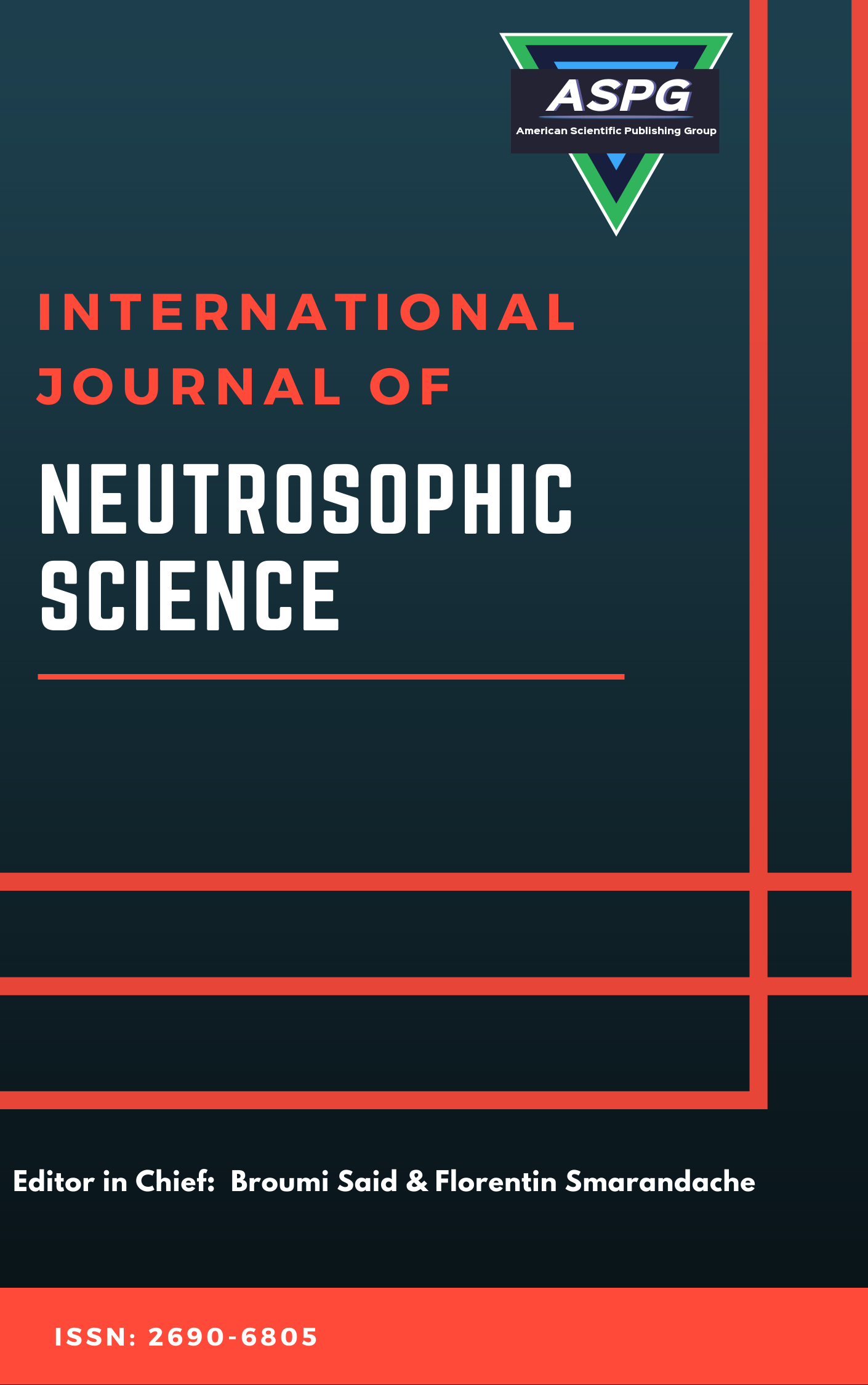

Volume 26 , Issue 3 , PP: 378-387, 2025 | Cite this article as | XML | Html | PDF | Full Length Article
Carmen Marina Méndez Cabrit 1 * , Josía Jeseff Isea Argüelles 2 , Danny Mauricio Sandoval Malquín 3 , Roberth Alexander Anamá Tiracá 4
Doi: https://doi.org/10.54216/IJNS.260328
The research problem of this endeavor was how to comprehend subjective meanings based upon qualitative research—a uniform methodological concern of the social sciences for phenomena perpetually occurring in ever-changing environments. The significance of the study is based upon a methodological necessity that transcends natural human capability to engage what it means to be "uncertain" now that so much social reality has been rendered tainted, in addition to cultural and contextual amalgamation. Nonsensical articles provide one form of understanding but fail to equip uncertainty—acknowledgement of where something can go one way or the other, or multiple—and multivalent perspectives ultimately render ineffective opportunities for researchers to adopt a quantifiable, absolute reality. Therefore, this endeavor applies the Iadov Plithogenic Neutrosophic approach, compounded of plithogenic logic with neutrosophic meaning to successfully navigate qualitative research with high uncertainty. Ultimately, findings support that this approach empowers researchers to remove layers and find meaning in more original and texture-based fashions than the traditional A/B/C option. Ultimately, this work contributes theoretically to qualitative researches with an integrative new approach to render subjectivity, while practically providing those who want to understand a complicated world, the works to be effective. This endeavor illustrates that the most effective flexible approach to render meaning knowledge is the only way to go when the undertaking exists in comprehensive arenas.
Qualitative Research , Neutrosophic Plithogenic Iadov , Subjectivity , Meanings , Uncertainty , Interpretive Methods , Context
[1] J. W. Creswell, Qualitative Inquiry and Research Design: Choosing Among Five Approaches. Thousand Oaks, CA, USA: Sage Publications, 2013, doi: 10.4135/9781452226095.
[2] N. K. Denzin and Y. S. Lincoln, The SAGE Handbook of Qualitative Research. Thousand Oaks, CA, USA: Sage Publications, 2005, doi: 10.4135/9781412974172.
[3] J. Corbin and A. Strauss, Basics of Qualitative Research: Techniques and Procedures for Developing Grounded Theory. Thousand Oaks, CA, USA: Sage Publications, 2008, doi: 10.4135/9781452230153.
[4] Y. S. Lincoln and E. G. Guba, Naturalistic Inquiry. Thousand Oaks, CA, USA: Sage Publications, 1985, doi: 10.1016/0147-1767(85)90062-8.
[5] U. Flick, An Introduction to Qualitative Research. Thousand Oaks, CA, USA: Sage Publications, 2014, doi: 10.4135/9781446287392.
[6] M. Q. Patton, Qualitative Research & Evaluation Methods. Thousand Oaks, CA, USA: Sage Publications, 2002, doi: 10.4135/9781412985659.
[7] G. Gibbs, Analyzing Qualitative Data. Thousand Oaks, CA, USA: Sage Publications, 2007, doi: 10.4135/9781849208574.
[8] S. Kvale and S. Brinkmann, InterViews: Learning the Craft of Qualitative Research Interviewing. Thousand Oaks, CA, USA: Sage Publications, 2009, doi: 10.4135/9781452275727.
[9] M. El-Bassiouny and M. A. Hossain, “Neutrosophic logic for decision-making in smart cities,” Sustainability, vol. 13, no. 4, p. 2155, 2021, doi: 10.3390/su13042155.
[10] M. A. Hossain, A. M. El-Bassiouny, and F. Smarandache, “Neutrosophic set theory and its applications in decision-making,” Mathematics, vol. 9, no. 18, p. 2262, 2021, doi: 10.3390/math9182262.
[11] R. C. M. A. de Almeida and I. C. B. de Lima, “A neutrosophic approach to evaluate the performance of renewable energy sources,” Renewable Energy, vol. 164, pp. 1010–1020, 2021, doi: 10.1016/j.renene.2020.09.054.
[12] H. J. Kim, “Neutrosophic decision-making for environmental management,” Environmental Science and Pollution Research, vol. 29, no. 15, pp. 44065–44076, 2022, doi: 10.1007/s11356-022-17781-8.
[13] S. K. Sharma, A. K. Gupta, and R. Kumar, “Neutrosophic logic-based decision-making for supply chain management,” Mathematical Problems in Engineering, vol. 2021, Art. no. 8821543, 2021, doi: 10.1155/2021/8821543.
[14] L. A. Alonso, K. M. Hernández, and Y. A. Alvarado, “Neutrosophic IADOV to validate the pedagogical conception of the process of formation of the pedagogical lexicon of students in the Spanish–Literature program,” Neutrosophic Computing and Machine Learning, vol. 12, pp. 31–38, 2020.
[15] J. I. Avilés-Monroy, M. Y. Leyva-Vázquez, and G. A. Á. Gómez, “Neutrosophic decision-making framework for environmental management,” Environmental Science and Pollution Research, vol. 29, no. 15, pp. 44065–44076, 2022, doi: 10.1007/s11356-022-17781-8.